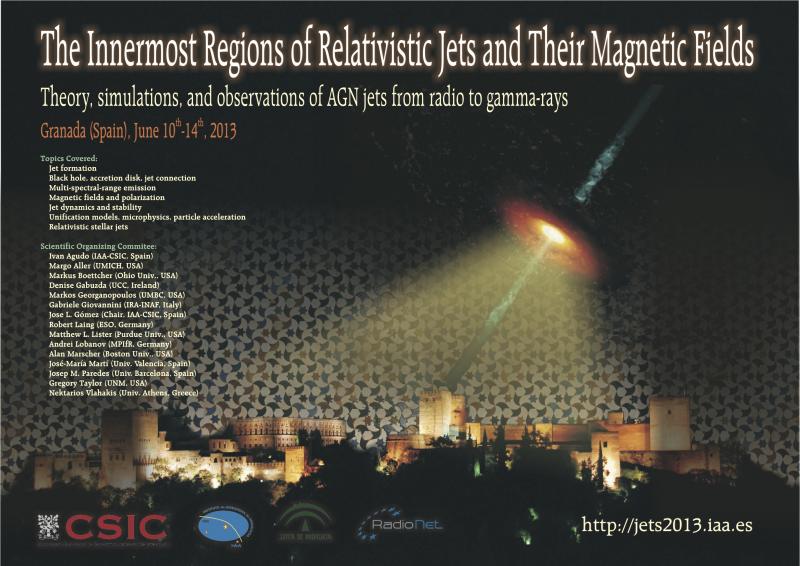The Innermost Regions of Relativistic Jets and Their Magnetic Fields. Granada (Spain). June 10th-14th, 2013.
Niinuma, Kotaro
Astrometric observations of the core position changes in Mrk 421 after the large X-ray flare in 2011.
Author list: K. Niinuma, M. Kino, A. Doi, S. Koyama, K. Hada, H. Nagai
Mrk 421 is one of the best sources for studying the most compact regions in blazars because of its proximity. Many observations for this source were performed at multi-wavelength. Even though the large Doppler factor of this source has been shown by the high-energy observations as well as other blazars, superluminal knot have not been detected directly by most of previous VLBI observations. However, Niinuma et al. (2012) recently reported the detection of a superluminal inward motion of the jet component in Mrk 421 located at 1.2 milli-arcsec north-west from the core after the largest X-ray flare occurred in 2010 February (Isobe et al. 2010), by conducting quick and dense follow-up observation immediately after the X-ray flare using JVN (Japanese VLBI Network) at 22 GHz. We concluded that one of the plausible explanations for such inward motion is an apparent motion, which was caused by the variation of the centroid of the radio core by the emergence of newly born with a superluminal speed. In order to obtain additional validation that the large flare actually caused the core position changes within a short term, we carried out phase-referencing observations for the large X-ray flare of Mrk 421 occurred in 2011 September 7th (ATel #3637) using VERA (VLBI Exploration of Radio Astrometry; baseline ranging over 1000-2300 km) operated by National Astronomical Observatory of Japan, which is designed to dedicate for the astrometric observation. The total of 13 epochs of VERA observations for the flare were performed between 2011 September 16th and 2012 April 28th (typical interval is bi-week) at 22 GHz. As the result of our dense monitor with VERA, the core position of Mrk 421 showed the continuous variation of ~0.5 milli-arcsec within about 40 days along the jet direction. Although, now we have discussed what caused such large variation of the core at 22 GHz, one of the possible origins is the ejection of bright and short-lived components associated with the flare.




